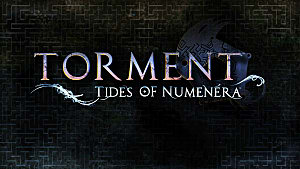


These are finite pools, and the more you use the less you will have later, however, these pools will grow as you level up, given you more resources to spend as the game progresses. So what are they? In Torment when you undertake a Skill Check (opportunity with a percentage chance to succeed or fail) or an Attack you can use points from your Stat Pools: Might, Speed or Intellect to increase your chance of success in succeeding the task or attack. They don’t play a significant role in Character Creation, but they will help shape your character as you progress the game. Edge and EffortĮdge and Effort are two of the most important things to understand when it comes to character building. We’ll start with a few basics and then we’ll jump into the classes and the kinds of builds you can make for each.
#Torment tides of numenera character customization how to
The game doesn’t spend a lot of time explaining how everything works, so I thought I would share some knowledge about the 3 classes ( Glaive, Jack and Nano) and show you how to make effective builds for each. However, for those players who love exploring new worlds, maximum dialogue options, and interesting lore-driven games, Torment: Tides of Numenera is a perfect choice.If you are a new player to Torment: Tides of Numenera, the game can be a bit overwhelming, especially when it comes to Character Creation and Classes, Skills and Abilities. Because the focus is not on combat, D&D players who favor fighting classes might not find the game as appealing. The focus on choice and customization mimics the flexibility of an in-person tabletop game. Actions, instead of intent, are important to influencing Tides, so even if the player has an ulterior motive, that doesn't factor into the Tides system.ĭ&D fans will be familiar with the character-building process, though the mechanics are slightly different. The Tide system functions similarly to an alignment system with each action giving the player more influence in the corresponding Tide color. For example, a cautious descriptor increases the character's perception and stealth skills.Įvery action the player takes influences what is called the Tide system. Based on the descriptor, the character's abilities are modified. The player is also given a descriptor based on their actions in the initial quest. Luckily, the class can be changed if the player wishes, so repeat players who may want to try a different class can do so. A class is determined in the first act of the game based on how the player chooses to react to a situation. Given that the turn-based combat mechanics of the game are awkward at best, this isn't a disadvantage to the game as a whole. Players have the option to engage in combat, but this is usually the option with the least benefit. There are always many dialogue options for each interaction, so the player has a high level of customization here to respond in a way that best fits their character. Players are encouraged to talk their way through situations, favoring those who ask questions or act selflessly. Gameplay focuses on choice and talking as opposed to combat. This feels like a DM setting the stage for players, giving as much detail as possible in character descriptions and behaviors of the NPCs. The descriptions are long and vivid so that the player gets a sense of the person they are interacting with before opening dialogue options. Because there is no character art available throughout the game and little voice acting, the player is instead given paragraphs of text describing everything with which they interact.


 0 kommentar(er)
0 kommentar(er)
